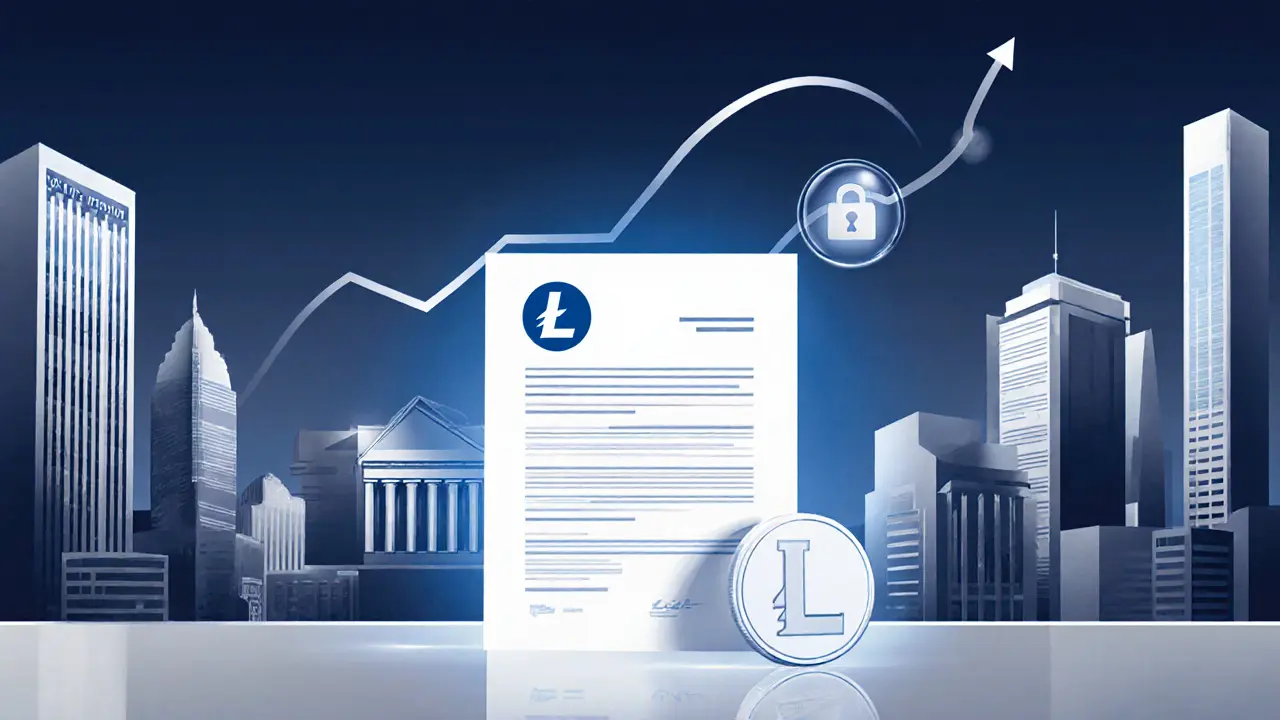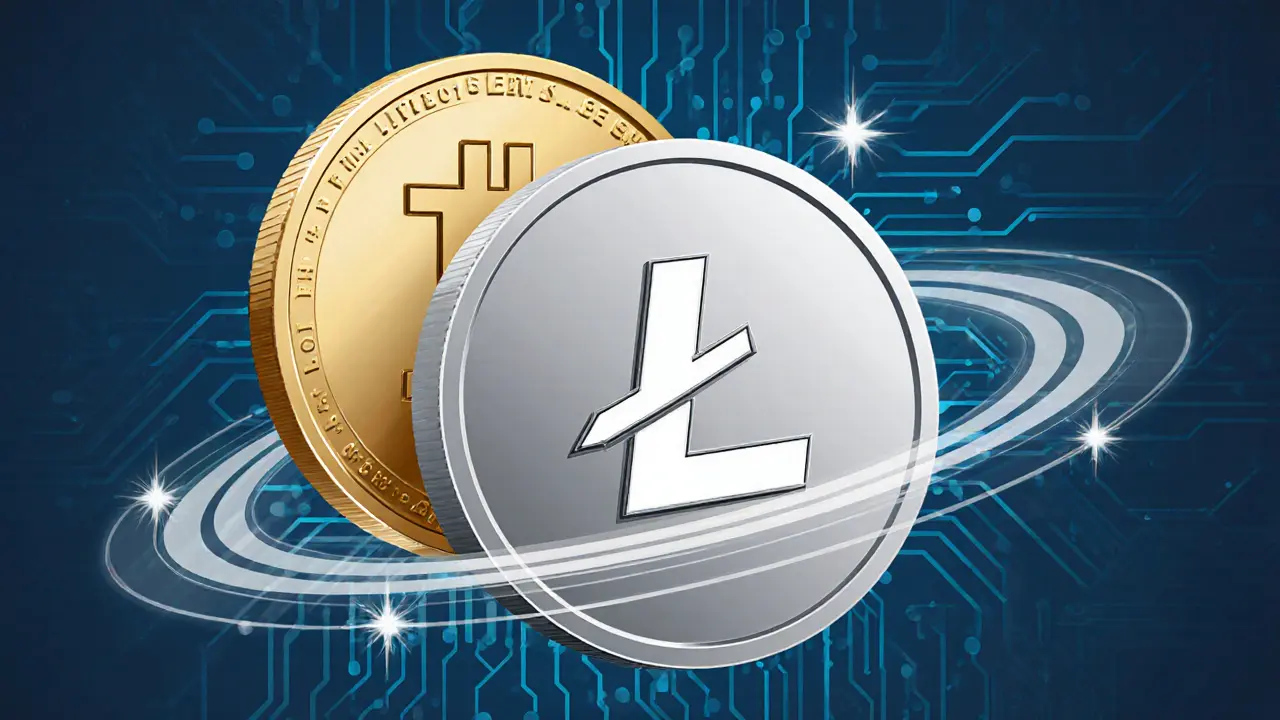Litecoin Transaction Calculator
Litecoin Transaction Calculator
Calculate how long your Litecoin transaction will take and what fees to expect based on current network conditions.
Transaction Estimate
When you hear “digital gold,” you probably think of Bitcoin, but there’s a sibling that’s been around for over a decade: Litecoin (LTC) is a peer‑to‑peer cryptocurrency created in 2011 by former Google engineer Charlie Lee, aimed at offering quicker transaction confirmations and lower fees than Bitcoin. In plain English, Litecoin tries to be the everyday cash of the crypto world - fast, cheap, and easy to use.
Key Takeaways
- Litecoin uses the Scrypt algorithm and confirms blocks every 2.5 minutes.
- Maximum supply is 84million LTC, double Bitcoin’s 21million.
- The 2025 MWEB upgrade adds optional privacy via MimbleWimble.
- Current price (Oct2025) hovers around $94, with analysts forecasting a wide range.
- It’s positioned as “digital silver” - a cheaper, faster complement to Bitcoin’s “digital gold.”
What Exactly Is Litecoin?
At its core, Litecoin is a decentralized, open‑source digital currency that anyone can send or receive without a bank. It runs on a proof‑of‑work (PoW) blockchain, meaning miners solve mathematical puzzles to add new blocks. The network’s consensus mechanism mirrors Bitcoin’s but swaps the SHA‑256 hash function for Scrypt, a memory‑hard algorithm that was originally designed to make mining more resistant to ASIC dominance.
Technical Specs in a Nutshell
Here are the numbers that matter if you’re looking under the hood:
- Block time: 2.5minutes (four times faster than Bitcoin’s 10minutes).
- Maximum supply: 84million LTC.
- Hash algorithm: Scrypt (uses about 2GB of memory per hash).
- Consensus: Proof‑of‑Work, same as Bitcoin.
- Transaction fees: Typically a few cents, far lower than Bitcoin’s average $2‑$3 fee.
These specs translate into a smoother experience for everyday purchases - you’d rather pay a few cents for a coffee than wait for a $2‑plus confirmation.

From Idea to Reality: Charlie Lee’s Vision
The brain behind Litecoin is Charlie Lee, a former Google engineer who launched the coin in October2011. Lee coined the term “lighter version of Bitcoin.” He wanted a testbed for new ideas that could later be adopted by Bitcoin without risking the main chain. Over the years, Lee has remained an active advocate, even selling his personal LTC stash in 2017 to avoid any conflict of interest.
The MWEB Upgrade - Adding Privacy When You Need It
July2025 saw the activation of the MimbleWimble Extension Block, known as MWEB. This optional side‑chain lets users create confidential transactions that hide amounts and sender/receiver data while still settling on the main Litecoin ledger. As of July2025, roughly 164,000 LTC (about $16.3million) were locked in MWEB, showing early adoption among privacy‑focused users.
Market Snapshot - Where Litecoin Stands in 2025
At the time of writing, Litecoin trades around $94.6, placing it in the top‑30 cryptocurrencies by market cap. Over the past year the price has bounced between $51.32 and $100.96, reflecting typical crypto volatility. Technical analysis points to a key resistance at $132.23 (the 38.2% Fibonacci level) and support near $75.5, which aligns with the lower end of most analyst forecasts.
Sentiment remains cautious: the Crypto Fear & Greed Index is at an “Extreme Fear” reading of 24, meaning traders are generally nervous. Still, many see Litecoin’s long‑running record - nine years of uninterrupted PoW operation - as a sign of resilience.

Future Outlook - Prices, ETFs, and Adoption
Forecasts diverge widely. Investing Haven pegs 2025’s average around $75.5, while Cash2Bitcoin is bullish at $231. CoinCodex lands in the middle with $114.40. Longer‑term models suggest a 2030 price near $384, contingent on three drivers:
- Regulatory clarity that allows exchange‑traded funds (ETFs) to include Litecoin.
- Institutional adoption - banks and hedge funds using LTC for fast settlement.
- Continued upgrades that improve privacy and scalability.
If any of those materialize, Litecoin could solidify its “digital silver” nickname, offering a cheaper, faster alternative to Bitcoin’s “digital gold.”
How to Get Started with Litecoin
Ready to try it out? Here’s a quick workflow:
- Pick a reputable exchange (e.g., Binance, Kraken, or a New Zealand‑based platform).
- Buy LTC using NZD or another fiat.
- Transfer the coins to a personal wallet. Hardware options like Ledger or Trezor support LTC; mobile wallets such as Trust Wallet or the official Litecoin Core wallet are good for everyday use.
- If privacy matters, enable the MWEB feature in your wallet settings before sending.
- Test a small transaction - send a few cents worth of LTC to a friend or a merchant that accepts crypto.
Keep an eye on transaction fees; they usually stay under $0.10, making LTC ideal for micro‑payments.
Litecoin vs. Bitcoin - Quick Comparison
| Feature | Litecoin (LTC) | Bitcoin (BTC) |
|---|---|---|
| Launch Year | 2011 | 2009 |
| Creator | Charlie Lee | Satoshi Nakamoto |
| Hash Algorithm | Scrypt | SHA‑256 |
| Block Time | 2.5minutes | 10minutes |
| Max Supply | 84million LTC | 21million BTC |
| Typical Fee (Oct2025) | ~$0.07 | ~$2.30 |
| Privacy Feature | MWEB (optional MimbleWimble) | Taproot (limited privacy) |
Both coins share the same PoW foundation, but the faster block time and cheaper fees make Litecoin a better fit for daily transactions, while Bitcoin remains the “store of value.”
Frequently Asked Questions
Is Litecoin a good investment in 2025?
Investors see Litecoin as a lower‑cost alternative to Bitcoin, with a solid track record and upcoming privacy upgrades. It’s less volatile than many altcoins, but still subject to market swings. If you believe in broader crypto adoption and potential ETFs, holding a modest amount could make sense as a “digital silver” complement to a larger Bitcoin position.
How does the MWEB privacy feature work?
MWEB creates a separate extension block where transaction amounts are hidden using the MimbleWimble protocol. Users opt‑in by sending LTC to an MWEB address; the coins become “shielded” and can be moved privately before they’re returned to the regular chain.
What wallets support Litecoin’s MWEB?
The official Litecoin Core wallet added MWEB support in version 0.21. Hardware wallets like LedgerNanoS and TrezorModelT also support shielded transfers after firmware updates. Mobile apps such as TrustWallet and OKEx Wallet let you toggle MWEB when sending.
How can merchants accept Litecoin?
Many payment processors - CoinGate, BitPay, and NOWPayments - list Litecoin among supported coins. Integration is as simple as copying a wallet address or using an API key. The low fee and fast confirmation make it attractive for coffee shops, online retailers, and even some New Zealand retailers.
Will Litecoin ever replace Bitcoin?
Unlikely. Bitcoin’s brand as “digital gold” and its massive institutional backing set it apart as a store of value. Litecoin’s niche is speed, lower fees, and optional privacy - roles that complement rather than compete with Bitcoin.


Author
Ronan Caverly
I'm a blockchain analyst and market strategist bridging crypto and equities. I research protocols, decode tokenomics, and track exchange flows to spot risk and opportunity. I invest privately and advise fintech teams on go-to-market and compliance-aware growth. I also publish weekly insights to help retail and funds navigate digital asset cycles.